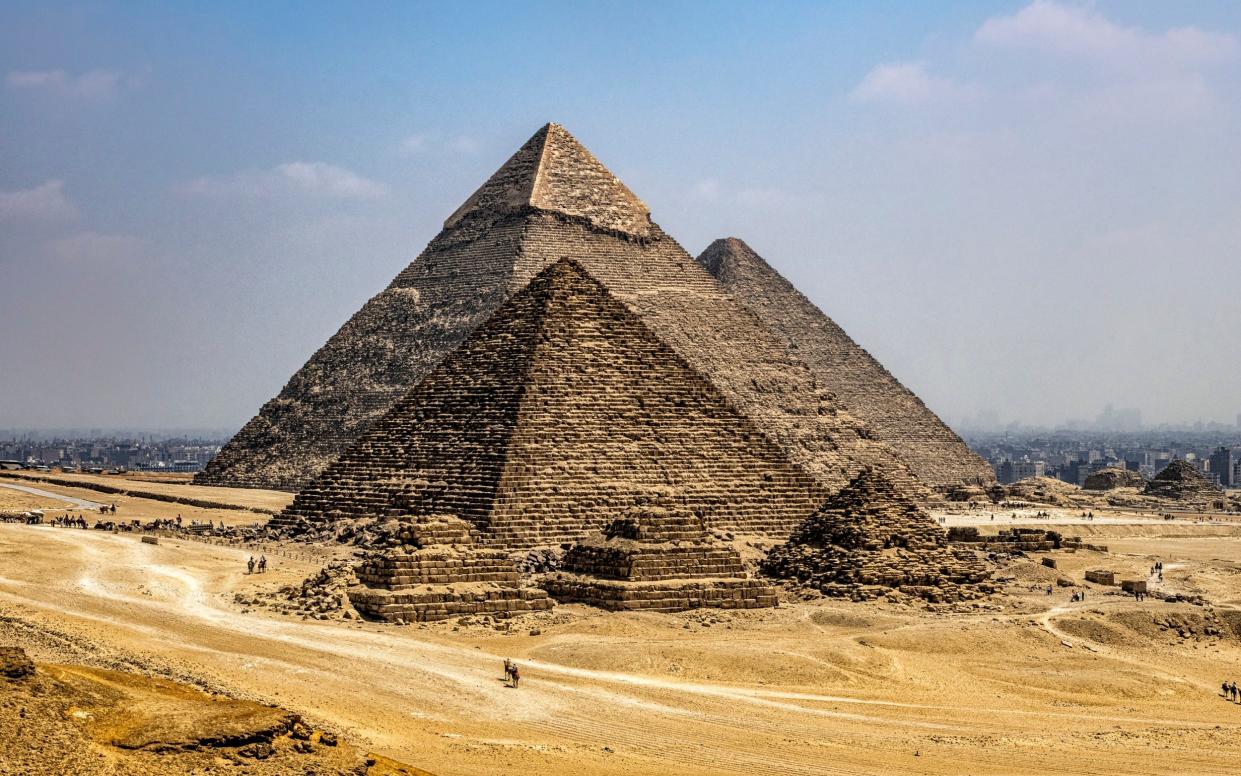Pyramids of Giza part of black history, schoolchildren taught

- Oops!Something went wrong.Please try again later.
The Pyramids of Giza have been included in a timeline of black history intended for schoolchildren.
Labour-run Luton council has compiled a range of educational resources to help local schools deliver a “diverse curriculum”, including a timeline citing the Pyramids of Giza in an overview of black history.
The 4,500-year-old monuments were built for the Egyptian pharaohs of the Fourth Dynasty, none of whom are believed by scholars to have been black.
Titled Black history: Prehistory to the 21st century, the material appears on the website of 100 great black Britons, which is listed as a resource for teachers by Luton council’s education services.
The council website states the rationale for the list of resources, saying: “In response to Black Lives Matter and our commitment to supporting schools Luton education service has compiled a comprehensive directory of high quality resources for schools to use.”
This is intended to “support schools to: be actively anti racist, celebrate diversity, be fully inclusive”.
The timeline, created by author Gaverne Bennett and included in a series of pull-out posters in The Guardian newspaper, also includes in its overview of black history the ancient queen Hatshepsut and the temple of Abu Simbel, another ancient Egyptian monument.
This was built during the reign of Ramesses II and boasts a monumental image of the pharaoh and his wife Nefertari who, along with Hatshepsut, are not believed to have been black.
A reading list devised by the council includes Brilliant Black British History, a children’s book which makes various erroneous claims, including that black people built Stonehenge.
Among the range of resources recommended by Luton council to schools is a presentation for teachers which states that babies and young children have some form of racial awareness, and should be encouraged to be more aware of race.
The material created in the US states: “Silence about race reinforces racism by letting children draw their own conclusions based on what they see.”
The quality and intention of the teaching materials have caused concern among campaigners for a “common sense” approach to race relations in the UK.
‘Politically partisan, educationally reductive’
Dr Alka Sehgal-Cuthbert, author and director of the campaign group Don’t Divide Us, said: “Luton education service claims it wants to improve education for its pupils, and has decided that diversifying school curriculum materials is a good way to do this.
“The truth is ‘diversifying’ today means endorsing a politically partisan, educationally reductive lens through which to select and frame curriculum content.”
Concerns about the diverse curriculum material in Luton follow a number of recent warnings about the quality of history being taught to children in the service of diversity.
Roman Emperor Septimius Severus was included on the front cover of a 2022 Puffin children’s book by This Morning presenter Alison Hammond, called Black In Time, which was billed as a history of “the most awesome black Britons”. Severus was not black but simply born in North Africa.
Primary school teaching material produced by a British company Twinkl, which creates off-the-shelf educational material, claims that Dark Age abbot St Hadrian of Canterbury was black, despite this not being the case.
Luton council was contacted for comment.

